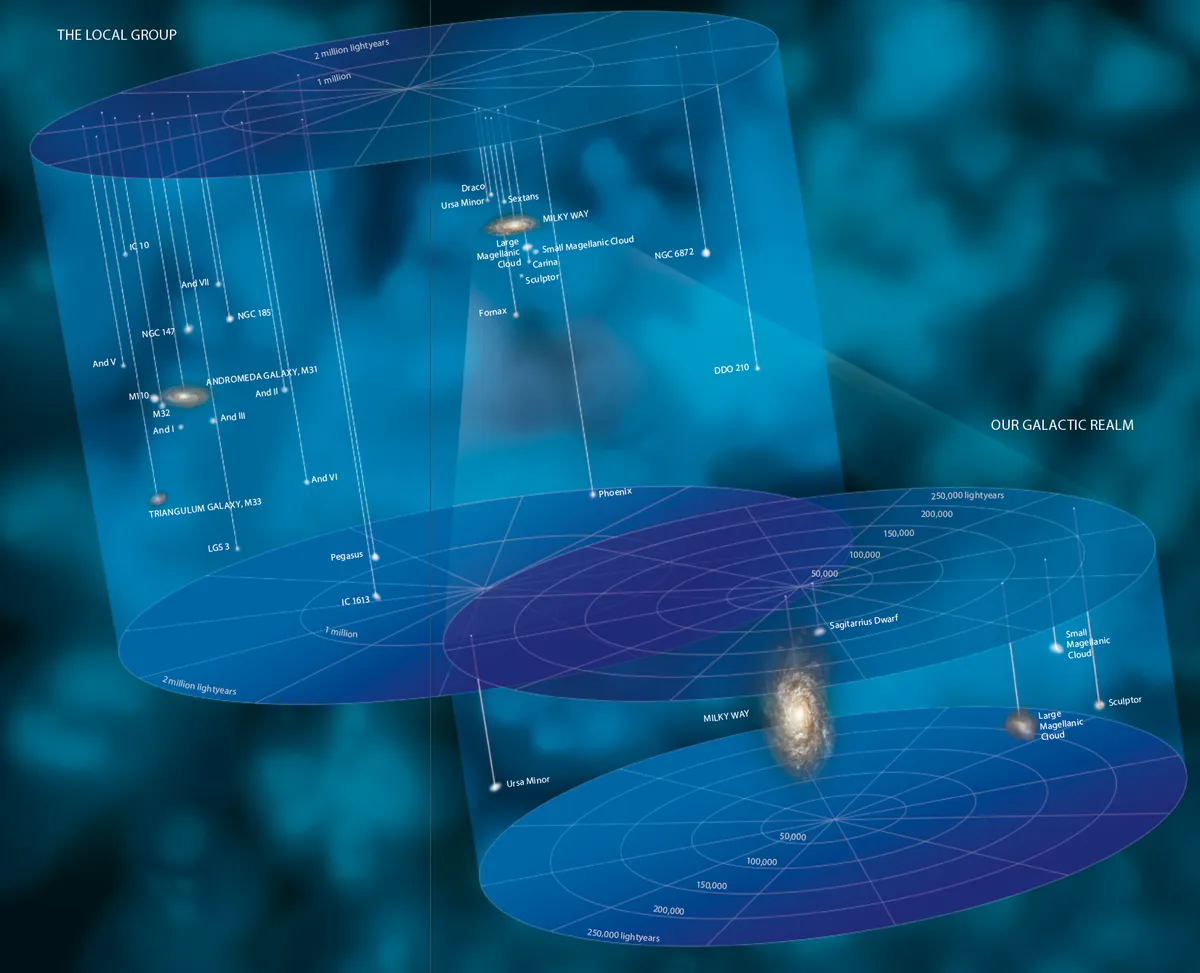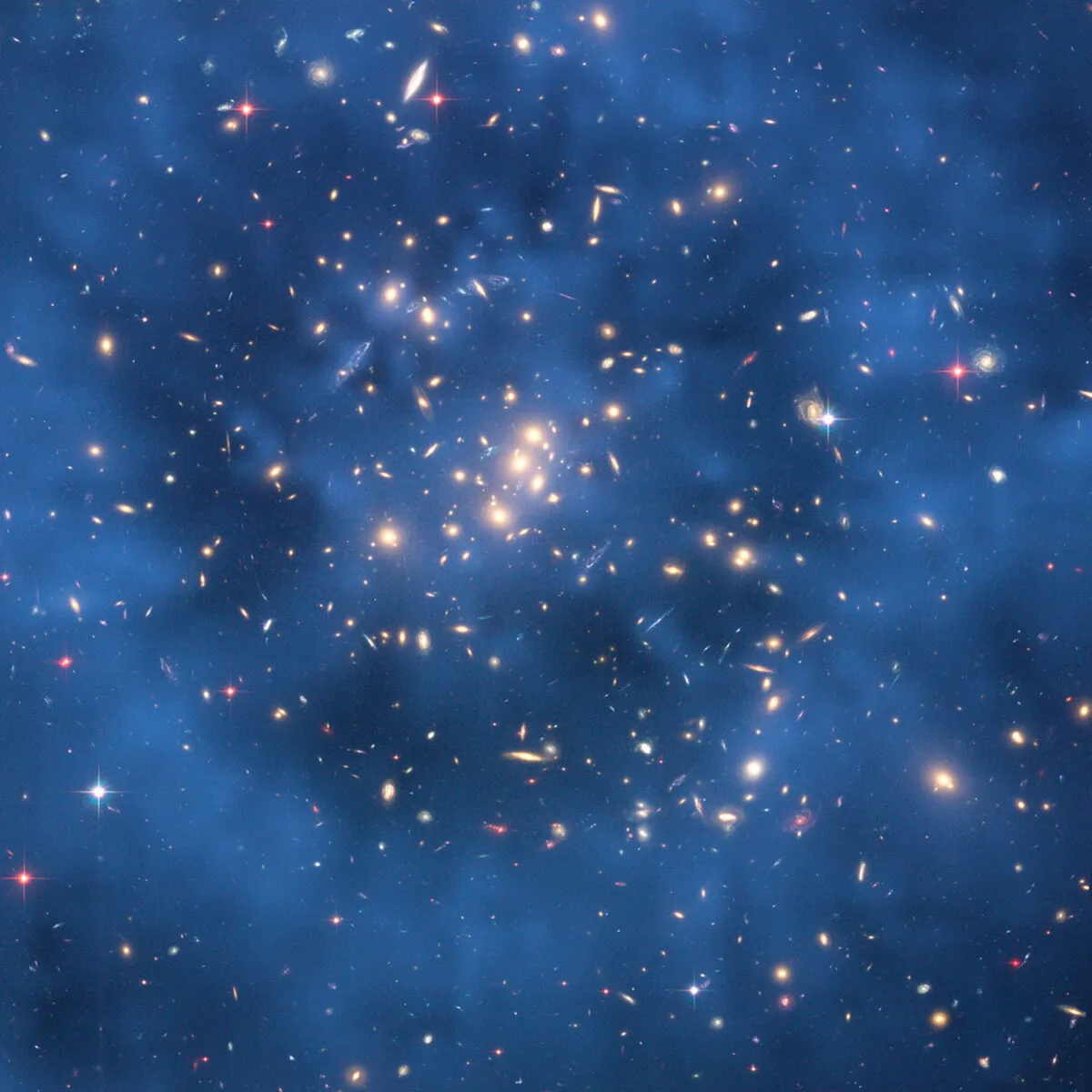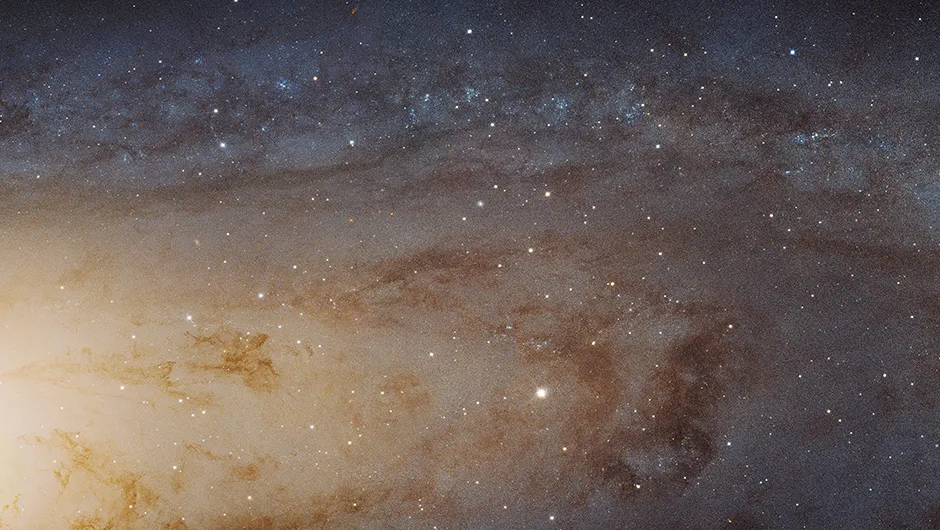Travel is all very well, but sometimes you can learn more by staying close to home.
As astronomers get excited by the views of distant galaxies provided by JWST, it’s good to be reminded that we can benefit from paying close attention to our surroundings.
Some of the most exciting areas of research happening at the moment consider our local galaxies as if they were observed from a distance, something that can be done thanks to extensive surveys of stars in the Milky Way and deep imaging of other members of our Local Group of galaxies.

Considering our own home in this way allows us to test the accuracy of techniques used to study the distant Universe – though in the case of the Milky Way, living in our object of study does make things slightly more complicated at times.
In a new paper, astronomer Stacy McGaugh takes a close look at the relationships between how stuff moves in Local Group galaxies and the way that mass in those systems is distributed.
This is crucial if you’re interested in where to find the mysterious dark matter that most cosmologists believe makes up most of the mass in the cosmos.
These measurements are even more important if, like McGaugh, rather than invoking the presence of dark matter to explain some of the oddities we observe in the Universe, our observations are best explained by modifying Newton’s equations of gravity.

Differences between our local galaxies and more distant neighbours may, he reckons, suggest problems with the dark matter model that we should pay attention to.
Things start off looking good for lovers of dark matter.
One of the fundamental rules that seems to govern how galaxies are assembled is the Tully–Fisher relation, which says that if you know the mass of a spiral galaxy you can work out how fast the material in it should be rotating around the centre.
Make these measurements for the Milky Way, the Andromeda Galaxy and a host of the small dwarfs that share the Local Group with us, and you find that they follow the same rule as distant galaxies.
No signs of anything untoward here.
When we consider what the masses of the big galaxies are, problems appear.

There are discrepancies between the mass of the Milky Way and Andromeda predicted by using the same sort of rules we use on distant galaxies, and what we observe by looking directly at their stars, or at how the material in their discs moves.
Essentially, McGaugh points out that both of the big denizens of the Local Group seem to have many more stars than we might otherwise expect for galaxies of their mass.
Put another way, something the size of the Local Group would typically have one large galaxy, the mass of the Milky Way – Andromeda is superfluous to requirements, and yet here it is.
McGaugh hints that this is another problem that dark matter can’t solve.
Others will point to the possibility that the particular history of Local Group’s galaxies may have led them to have particularly efficient star formation, or perhaps that there is some subtlety to our studies of distant galaxies we have yet to understand.
Either way, it’s another reminder to look around us, and not always to seek answers in distant realms.
Chris Lintott was reading Local Group Galaxies from an External Perspective by Stacy McGaugh.
Read it online at: ui.adsabs.harvard.edu/abs/2023arXiv230500858M/abstract.
This article originally appeared in the July 2023 issue of BBC Sky at Night Magazine.

